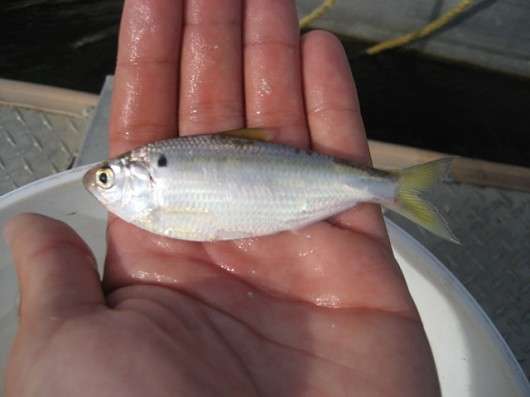
DANDRIDGE, TENN. — If you were going to attempt to break down Douglas Lake, as a bass angler or a fan, you have to first look at the threadfin shad.
Following the shad seems to be a critical factor for some of the top anglers in the Douglas Lake Challenge. But keeping up with them seems to be as challenging as catching a limit of above average largemouth.
“In practice the (shad) spawn was really good. They were on rocks, docks, and anything really hard but it’s dying out,” said Matt Greenblatt, who sacked 17-9 for sixth place on Day One. “They’re slowly moving from right on the shore back to 5 feet to back to 10 feet. The pods aren’t crammed up on the shore like they were. So you have to keep adjusting to the bait.”
As temperatures warm each day, the shad begin making their way toward deeper water. The problem for the anglers in this event hasn’t been whether they’re deep or shallow. But the range in the water column they are sitting in. They can be found everywhere from the surface to a variety of depths down to 35 feet and everywhere in between.
It makes finding fish in this event an even more dicey affair, considering the shad have yet to settle in one patternable position.
“The shad can be found out real deep,” said Matt Reed, who is currently in second place with 21 pounds, 14 ounces. “But they are on top of the water and I really wish they weren’t, it makes those fish suspend.”
Suspended fish have always been a bane to anglers, forcing them to continually switch baits to find the right target zone. Just because they are suspended doesn't mean they will be hard to catch, it just means you have to be cognizant not to work your bait near the bottom so much.
Jeff Kriet came to scales with 17-15 and settled into fifth place. He used a variety of baits to search for suspended bass.
"If you bounce around enough, every now and then, you’ll get them to bite,” Kriet said. “But I have to change baits to see how deep they are.”
With a lack of wind and water movement, the shad are able to move freely and roam aimlessly across the lake. That's making it tough to figure out exactly where the shad will position and where the suspended bass will wait.
“If it gets right and you get some wind those shad will position over the juice and you can catch them. But right now you have to bounce around when they’re suspended,” Kriet said.
For the anglers chasing them and hoping to find largemouth bass with them, it becomes a guessing game. One that some won on Day One, and one that could be different for the whole field on Day Two.
